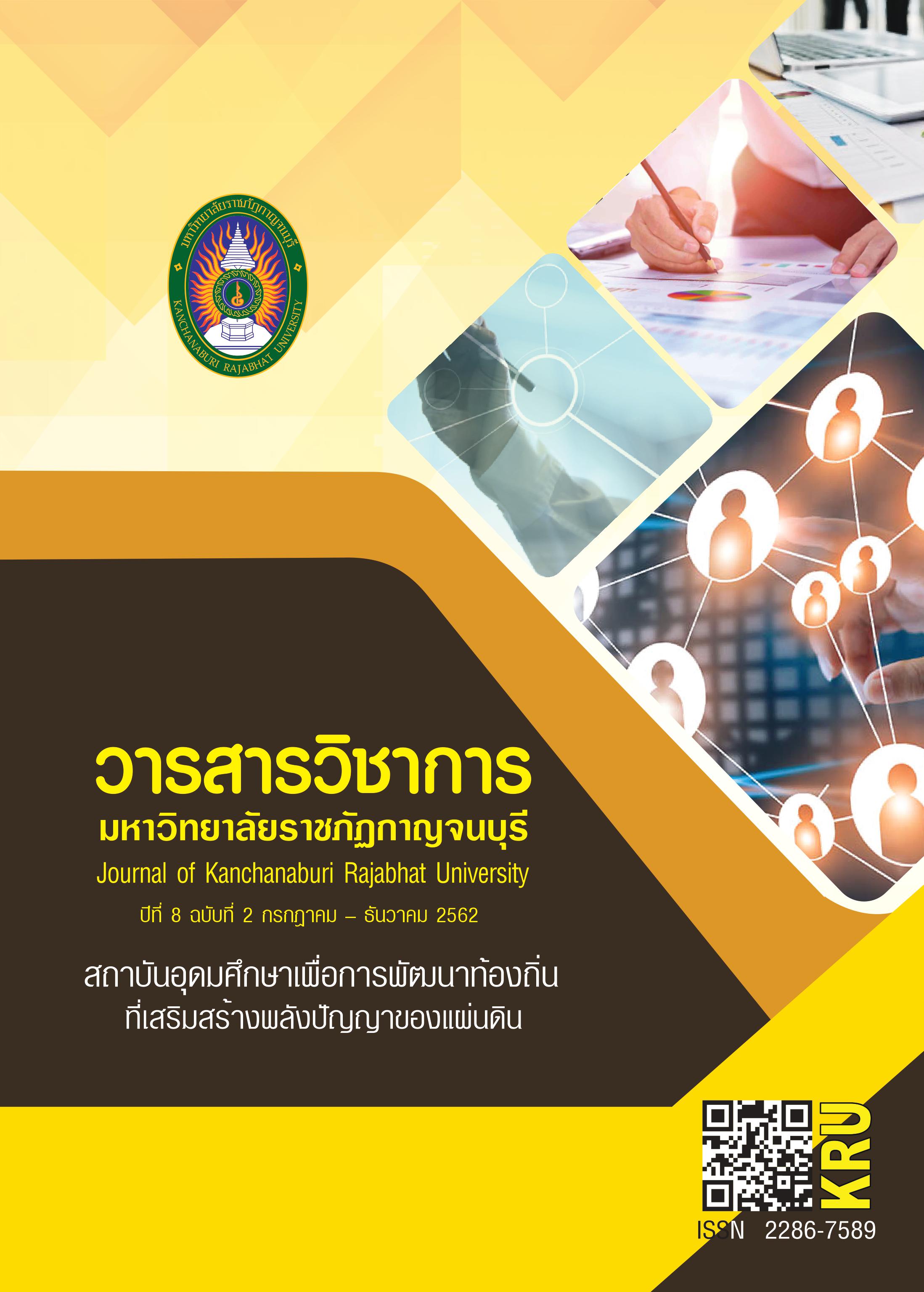THE RELATIONSHIP BETWEEN HAPPINESS IN WORK AND ORGANIZATIONAL COMMITMENT OF EMPLOYEE AT ASSUMPTION UNIVERSITY
Main Article Content
Abstract
The objective of this study is to examine: 1.) happiness in work 2.) level of organizational commitment of Assumption University’s personnel 3.) To compare the relationship between the happiness of work of Assumption University’s personnel classified by individual factors and 4.) Finding relationship between happiness in work with organizational commitment of Assumption University’s personnel by using a set of 250 questionnaires as a mechanism for collecting data and using statistics to analyses the received data. In particular, percentage, mean, hypothesis in type of T -test, F-test (One-Way ANOVA), Correlation and Multiple Regression Analysis
The results showed that most respondents were female between the age of 26-35, marriage, educational level in bachelor degree, staff position, monthly income between 10,001-20,000 baht, and have a working period more than 10 years. Factors of the happiness in work of Assumption University’s personnel in the aspects of relationship, passion, success and acknowledged are at a very important level. The level of organizational commitment of Assumption University’s personnel in the aspects of reliability and accepted of organizational goals, the willingness to devote considerable effort to the benefit of the organization and the strong desire to maintain their membership of the organization. In overall, organizational commitment is at a very important level. The relationship between the happiness of work of Assumption University’s personnel classified by individual factors, the different age, status, salary and age of employment are different organizational commitment of Assumption University personnel. But the different gender, education level, and positions are not difference in organizational commitment of Assumption University personnel. The happiness factor in work is related to organizational commitment of Assumption University’s personnel at the same high level, and found that happiness factor in work, in the aspects of relationship, passion, success and acknowledged are influenced to commitment of Assumption University’s personnel as significant statistic at the level of .05
Suggestions: the executive of university should create a working atmosphere, to increase motivation and encouragement, to reduce conflicts that might be occurred, to create a sense of importance in their role with the organization, to recognize the goals of their assignment and to appreciate the personnel in order to motivated their working ability. In addition, to assign the work in correspondence with the ability of personnel for effective outcome and the executive should willingly recognize to problems, opinions and suggestions for more successful outcome. Performing equal recognition and appreciation of personnel, which will encourage them to work together and achieve good performance in the work.
Article Details
References
ส่งออกกล้วยไม้ในเขตกรุงเทพมหานครและปริมณฑล. วิทยานิพนธ์ศิลปศาสตรมหาบัณฑิต สาขาวิชาการจัดการภาครัฐและภาคเอกชน คณะศิลปศาสตรมหาบัณฑิต มหาวิทยาลัยศิลปากร.
กัลยา วานิชย์บัญชา. (2545). การใช้ SPSS for Windows ในการวิเคราะห์ข้อมูล (พิมพ์ครั้งที่ 6). กรุงเทพฯ :
ภาควิชาสถิติ คณะพานิชยศาสตร์และการบัญชี จุฬาลงกรณ์มหาวิทยาลัย.
จันทนา เสียงเจริญ. (2556). ความผูกพันต่อองค์การของพนักงาน, ท่าอากาศยานไทย จำกัด (มหาชน).
วิทยานิพนธ์บริหารธุรกิจมหาบัณฑิต กาจัดการทั่วไป คณะบริหารธุรกิจ มหาวิทยาลัยเทคโนโลยีราชมงคลธัญบุรี.
ธีรภัทร วาณิชพิทักษ์. (2555). การศึกษาความผูกพันต่อองค์การของพนักงาน บริษัทร่วมเจริญพัฒนา จำกัด.
การค้นคว้าอิสระบริหารธุรกิจมหาบัณฑิต สาขาวิชาบริหารธุรกิจ คณะวิทยาการจัดการ มหาวิทยาลัยราชภัฏพระนคร.
รวมศิริ เมนะโพธิ. (2550). เครื่องมือวัดการทำงานอย่างมีความสุขกรณีนักศึกษาภาคพิเศษ ระดับปริญญาโท
สถาบันบัณฑิตพัฒนาบริหารศาสตร. สารนิพนธ์วิทยาศาสตร์มหาบัณฑิต (การพัฒนาทรัพยากรมนุษย์
และองค์การ) คณะพัฒนาทรัพยากรมนุษย์ สถาบันพัฒนบริหารศาสตร์.
เบญจวรรณ พัชรพงศ์พรรณ. (2555). ปัจจัยที่มีผลต่อความผูกพันองค์กรของพนักงานบริษัทบางกอกเอ็นเตอร์
เทนเม้นต์ จำกัด. วิทยานิพนธ์บริหารธุรกิจมหาบัณฑิต สาขาวิชาบริหารธุรกิจ คณะวิทยาการจัดการ,
มหาวิทยาลัยราชภัฏเพชรบูรณ์.
Cowin, L. S., and Hengstberger-Sims, C.., (2006). New graduate nurse self-concept and
retention: A longitudinal survey. Journal of Nursing Administration, 43 (1), 59–70.
Gavin, J. H., and Mason, R. O. (2004). The Virtuous Organization: The Value of Happiness in the
Workplace. Organizational Dynamics, 33 (4), 379-392.
Likert, R.A. (1932). Technique for the Measurement of Attitudes, Arch Psychological. 25(140): 1 – 55.
Manion, J. (2003). Joy at work: Creating a positive work place. Journal of Nursing Administration, 33 (5), 293-299
Steers, R.M. (1977). Organization Effectiveness. California: Goodyear Publishers Inc.
Taro Yamane (1973). Statistics: An Introductory Analysis. 3rd Ed.NewYork.Harper and Row
Publications. 727-728.
Tzeng, H.-M., (2002). The influence of nurses’ working motivation and job satisfaction on
intention to quit: an empirical investigation in Taiwan. International Journal of Nursing
Studies, 39, 867–878.
Warr, P. (2007). Work, happiness, and unhappiness. Mahwah, NJ, US: Lawrence Erlbaum
Associates Publishers.


